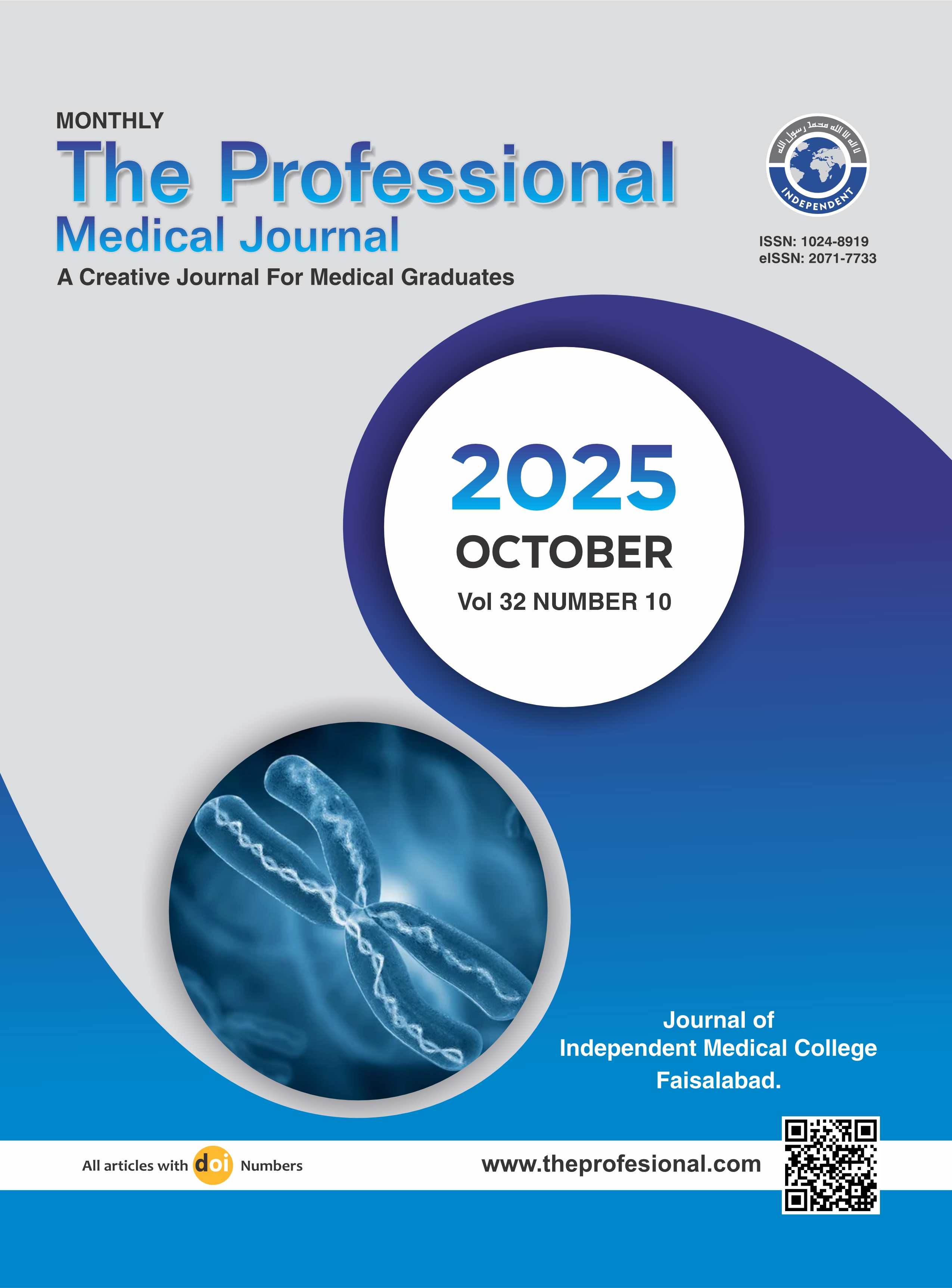Diagnostic accuracy of lung ultrasound in diagnosing interstitial lung disease taking HRCT as gold standard.
DOI:
https://doi.org/10.29309/TPMJ/2025.32.10.9838Keywords:
Computed Tomography, Diagnostic Accuracy, Interstitial Lung Disease, UltrasonographyAbstract
Objective: To evaluate the diagnostic accuracy of ultrasonography for detection of interstitial lung disease (ILD) keeping high resolution computed tomography (HRCT) scan as gold standard. Study Design: Cross-sectional, Validation study. Setting: Department of Radiology, Combined Military Hospital, Gujranwala, Pakistan. Period: June 2024 to February 2025. Methods: A total of 95 patients of either gender, aged 18-75 years, and who presented with suspected ILD were analyzed. All patients underwent lung ultrasound (LUS) followed by HRCT. Data analysis was performed using IBM-SPSS Statisics, version 26.0. The diagnostic accuracy of LUS was calculated for ILD along with sensitivity, specificity, positive predictive value (PPV), and negative predictive value (NPV). Results: In a total of 95 patients, 68 (71.6%) were male. The mean age was 64.4±9.5 years, while 63 (66.3%) patients were aged between 61–75 years. Dyspnea, and chronic cough were reported in 85 (89.5%), and 76 (80.0%) patients, respectively. The HRCT confirmed ILD in 87 (82.7%) patients. LUS was positive for ILD findings in 72 (75.8%) patients. The sensitivity, and specificity of LUS for the detection of ILD were 81.6%, and 87.5%, respectively. The PPP, and NPV were 98.6%, and 30.4%, respectively. The overall diagnostic accuracy of LUS taking HRCT as gold standard was calculated as 82.4%. Conclusion: Lung ultrasound can be cost effective and safer investigation in initial evaluation of ILD with good diagnostic accuracy.
Downloads
Published
Issue
Section
License
Copyright (c) 2025 The Professional Medical Journal

This work is licensed under a Creative Commons Attribution-NonCommercial 4.0 International License.


